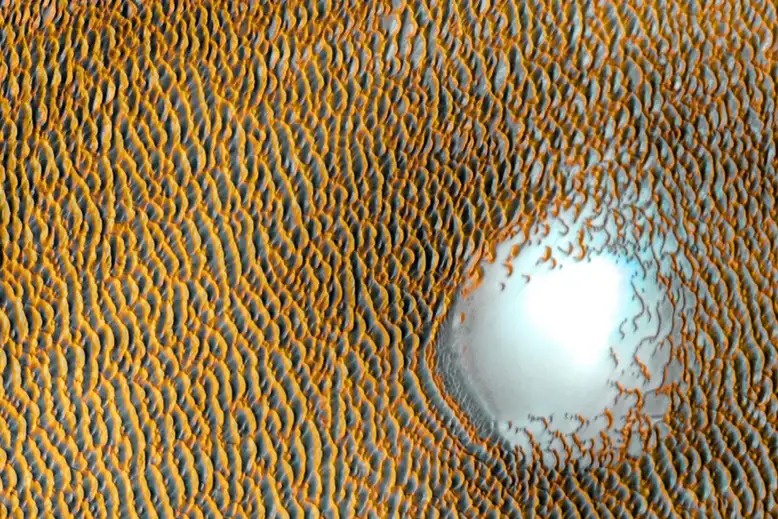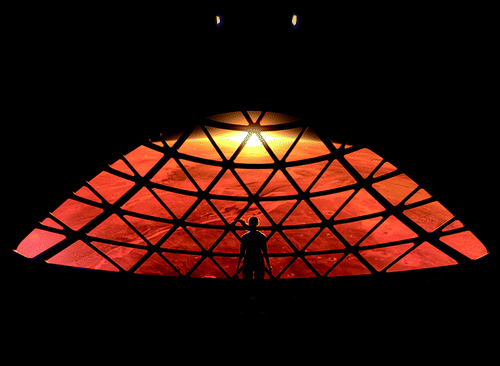Mars has enough wind to power bases near the poles all year round

Wind turbines on Mars could theoretically provide enough energy for scientists to safely explore outer regions of the planet during crewed missions.
Solar energy might be sufficient for investigating Mars near the equator, but to live nearer the poles all year round, other power sources are needed. In combination with solar power, well-placed wind turbines could supply enough energy for a group of six people to live and work on Mars all year round, without the radiation risks associated with nuclear energy, says Victoria Hartwick at the NASA Ames Research Center in Mountain View, California.

Dark dunes sculpted by the wind surrounding Mars’s northern polar cap in an image taken by NASA’s Mars Odyssey spacecraft
NASA/JPL-Caltech/ASU

“It’s really exciting that by combining potential wind power with other sources of energy, we open up large parts of the planet to exploration and to these really scientifically interesting zones that the [scientific] community may have previously discredited because of energy requirements,” she says.

Martian winds have about 99 per cent less force compared with the winds of the same speed on Earth due to the planet’s thin atmosphere. Studies of Martian winds since the 1970s have either concentrated on landing zones – which must be low-wind for safe landings – or on single assessments of mountainous ridges. These don’t provide the full picture of a region’s wind potential, which can vary considerably over a day, season and year, says Hartwick.
She and her colleagues adapted a global climate model that was originally designed for Earth so that it looked at Mars. They used detailed information about Mars, such as its precise landscape, heat energy, dust levels and solar radiation in different regions, taken from maps made by the Mars Global Surveyor and Viking missions. Armed with this information, the model simulated the various wind speeds across the planet, day and night, across seasons and even years – as storms vary from year to year.

For each unit area on Mars, the researchers calculated the maximum power that could be produced using a 100 per cent efficient wind turbine. They also calculated the theoretical power returns from four commercial turbines of various sizes currently used on Earth. Then they compared this with the estimated energy requirements for sustaining six people on Mars for a mission lasting 500 Martian days, as determined in previous studies.































Leave a comment
All comments are moderated before being published.
This site is protected by hCaptcha and the hCaptcha Privacy Policy and Terms of Service apply.